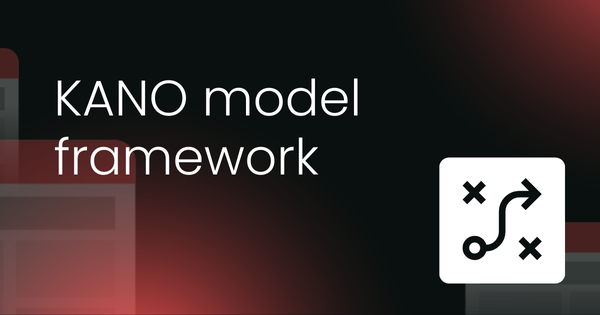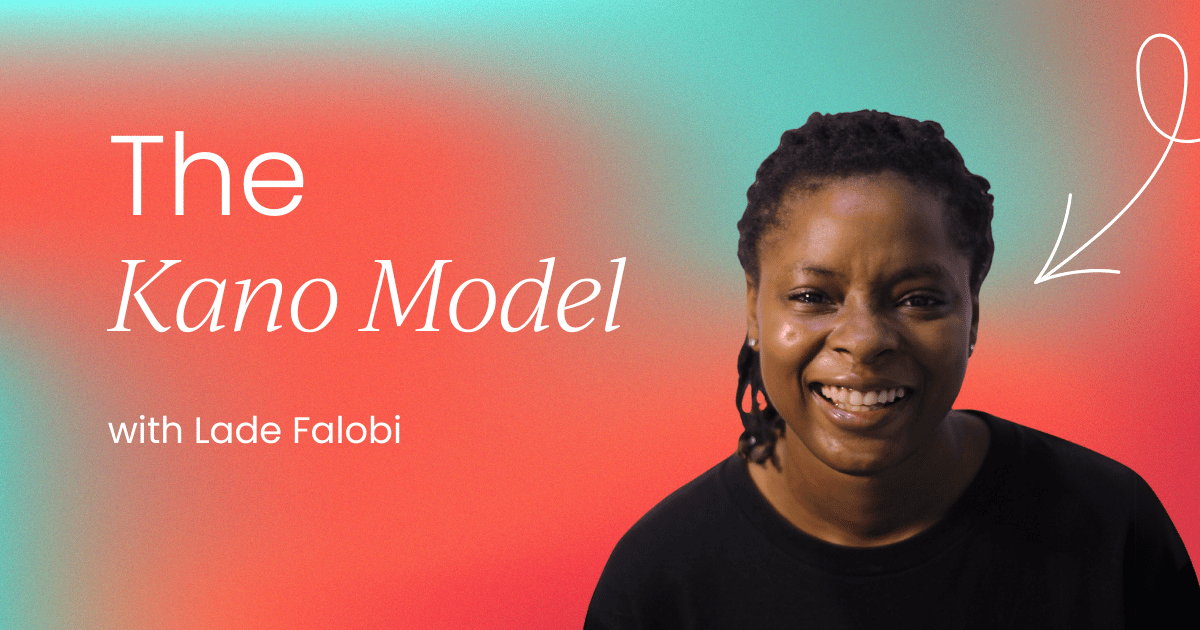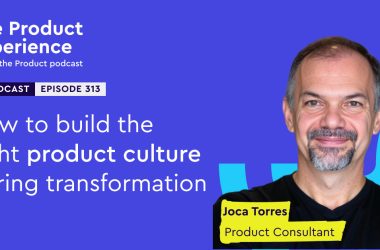Picture this: You’re at a restaurant, and the waiter proudly announces that their kitchen uses clean water and fresh ingredients. You’d probably think, “Well, obviously. That’s the bare minimum.”
Now, imagine they boast about a dessert that changes colour as you eat it. Suddenly, you’re intrigued.
This is the difference between messaging basic expectations versus true differentiators. Yet some products get this backwards, leading with table stakes while burying their actual advantages.
Many product marketers struggle with the same challenge: which features should lead your messaging, and how should you talk about each one? The answer lies in understanding that not all features are created equal, and customers don’t respond to them equally either.
I believe the best solution lies in a framework that’s been hiding in plain sight since the 1980s: the Kano Model. The model was originally designed for product managers to prioritize features, but it’s actually a goldmine for crafting messaging that hits different.

The Kano Model
Back in the 1980s, Dr. Noriaki Kano noticed something that challenged conventional wisdom. Companies assumed customer satisfaction worked like a straight line: improve any feature, and customers get happier.
But Kano discovered that features actually fall into distinct categories, each with different rules for how they impact satisfaction.
His research revealed five types of features, and each one demands a completely different messaging approach.
1. Basic needs
These are the features customers expect without question. Like clean water at a restaurant, they’re invisible when present but devastating when absent.
Here’s the messaging trap: basic features feel important to you because they took engineering months to build. But to customers, they’re just checkboxes. Leading with them is like a restaurant advertising “our food won’t poison you.”
How to message basic features
Use them for reassurance, not attraction. Save them for bottom-of-funnel content where prospects need confirmation that you cover the essentials. Your tone should be matter-of-fact, not celebratory.
❌ Instead of: “Introducing our revolutionary 256-bit encryption!”
✅ Try: “Your data is protected with enterprise-grade encryption” (mentioned casually in small text)
2. Performance features
These features directly correlate with satisfaction. The better they perform, the happier customers will be.
Performance features are your competitive battleground. Customers will literally compare you against competitors on these dimensions.
How to message performance features
Lead with superiority, using specific numbers, comparisons, and proof points. Put them in demos, comparison pages, and case studies.
❌ Instead of: “Fast loading times”
✅ Try: “3x faster than Competitor X, with dashboards loading in under 2 seconds”
3. Excitement features
These are the surprises that delight customers. Nobody expects them (so their absence doesn’t hurt), but everyone remembers them when they’re there.
Examples are AI-powered insights, predictive features, and delightful micro-interactions
How to message excitement features
Use them as hooks in your top-of-funnel content. They’re perfect for social media, ads, and first impressions. They make people stop and say, “Wait, it can do that?”
❌ Instead of: “Advanced analytics dashboard”
✅ Try: “Our AI predicts which customers will churn three months before you see the warning signs”
4. Indifferent features
Customers simply don’t care about these features, so they rarely influence buying decisions.
In SaaS, indifferent features might include default themes, admin panel layouts, or certain customization options that seemed important during development but don’t move the needle for users.
How to message indifferent features
Don’t. Seriously. Mentioning them dilutes your message and wastes precious attention. Every word in your messaging should earn its place.
5. Reverse features
These features actively annoy customers. They’re well-intentioned but irritating, like excessive notifications, stringent verification processes, mandatory tutorials, or complex approval workflows.
How to message reverse features
If you have them, don’t mention them. If competitors have them and you don’t, make their absence a selling point.
❌ Instead of: “Streamlined approval process”
✅ Try: “No approval bottlenecks – your team moves fast without waiting for permission”
The Kano Model in action
Let’s go back to the restaurant example from the beginning. Here’s how a restaurant might apply this framework to its menu and marketing:
Basic features (don’t lead with these):
- Fresh ingredients
- Clean kitchen
- Accepts credit cards
Performance features (compete on these):
- “28-day dry-aged beef”
- “15-minute delivery guarantee on all orders”
- “Locally sourced within 50 miles”
Excitement features (hook people with these):
- “Interactive tasting menu that changes based on your reactions”
- “Chef personally explains each dish’s story”
- “Ingredients grown in our rooftop garden”
Why features evolve (and your messaging should too)
Features don’t stay in the same category forever. What excites customers today might become a basic expectation tomorrow.
Think about touchscreens on phones. In 2007, the iPhone’s touchscreen was an excitement feature. Today, most phones have a touchscreen, so no one leads with it.
We can already see the same evolution happening in AI:
- 2022–2023, AI as an excitement feature: When ChatGPT launched, AI features were genuinely exciting. Companies using “AI-powered” messaging created immediate interest and differentiation.
- 2024–2025, AI as a performance feature: Now that most SaaS companies offer AI capabilities, it’s become a performance battleground. Customers compare which AI gives better results, faster responses, or more accurate predictions. The messaging has shifted from “We have AI” to “Our AI is 15% more accurate than competitors.”
- The future, AI as a basic feature: We’re already seeing this transition. Customers increasingly expect AI capabilities as standard. Soon, not having AI features may become a deal-breaker. Vendors will make them basic features that require only reassuring mentions, rather than leading with them.
All this means you need to regularly audit your messaging. That excitement feature you’ve been leading with for two years might now be table stakes. Meanwhile, your engineering team might have shipped new capabilities that could become your next excitement hook.
How to apply the Kano Model in your messaging
Let’s walk through how to apply this framework to your current product messaging.
Step 1: Categorise your features
List your main features and honestly assess which Kano category they fall into. Ask customers directly if you’re unsure; their reactions will tell you everything you need to know.
Step 2: Map features to content types
- Basic features: Feature lists, FAQ pages, security documentation
- Performance features: Comparison pages, demos, case studies
- Excitement features: Homepage hero, social content, PR announcements
Step 3: Test your assumptions
Your exciting feature might be basic to customers. Your basic feature might actually differentiate you if competitors are terrible at it. Let customer research, not internal assumptions, guide your categorisation.
The anti-pattern that kills messaging
The biggest mistake product marketers make is treating all features equally. They create messaging like “We have security, speed, AI, integrations, and uptime.”
This is like a restaurant saying: “We have clean plates, delicious food, tableside magic, various seating options, and working bathrooms.” Everything gets equal weight, so nothing stands out.
Instead, lead with what excites, compete on what performs, and reassure on what’s basic.
The messaging hierarchy that works
When someone asks, “What does your product do?” your answer should follow this structure:
- Hook with excitement: “We predict customer churn before it happens”
- Compete on performance: “With 94% accuracy, compared to 67% industry average”
- Reassure on basics: “All running on enterprise-grade security infrastructure”
Notice the hierarchy. You lead with intrigue, back it up with proof, and close with confidence.
The Kano Model shouldn’t just be for product managers anymore. It’s time more product marketers used it to define feature messaging and plan launches.







